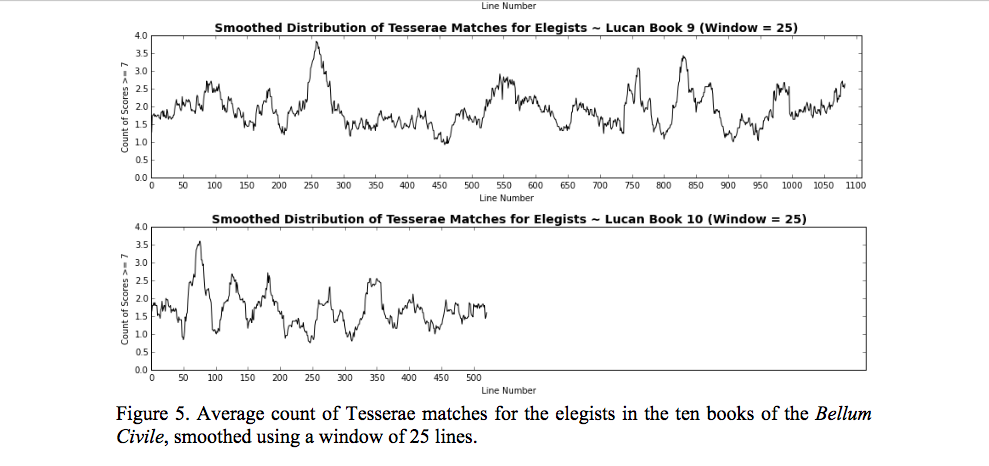Patrick J. Burns
Research Associate at Harvard Human Evolutionary Biology | Formerly Quantitative Criticism Lab, ISAW Library | Fordham PhD, Classics | CLTK contributor
Measuring and Mapping Intergeneric Allusion in Latin Poetry using Tesserae
Published in Journal of Data Mining and Digital Humanities, August 2017. ![]()

Abstract
Most intertextuality in classical poetry is unmarked, that is, it lacks objective signposts to make readers aware of the presence of references to existing texts. Intergeneric relationships can pose a particular problem as scholarship has long privileged intertextual relationships between works of the same genre. This paper treats the influence of Latin love elegy on Lucan’s epic poem, Bellum civile, by looking at two features of unmarked intertextuality: frequency and distribution. I use the Tesserae project to generate a dataset of potential intertexts between Lucan’s epic and the elegies of Tibullus, Propertius, and Ovid, which are then aggregrated and mapped in Lucan’s text. This study draws two conclusions: 1. measurement of intertextual frequency shows that the elegists contribute fewer intertexts than, for example, another epic poem (Virgil’s Aeneid), though far more than the scholarly record on elegiac influence in Lucan would suggest; and 2. mapping the distribution of intertexts confirms previous scholarship on the influence of elegy on the Bellum civile by showing concentrations of matches, for example, in Pompey and Cornelia’s meeting before Pharsalus (5.722-815) or during the affair between Caesar and Cleopatra (10.53-106). By looking at both frequency and proportion, we can demonstrate systematically the generic enrichment of Lucan’s Bellum Civile with respect to Latin love elegy.
Full article available at Journal of Data Mining and Digital Humanities.